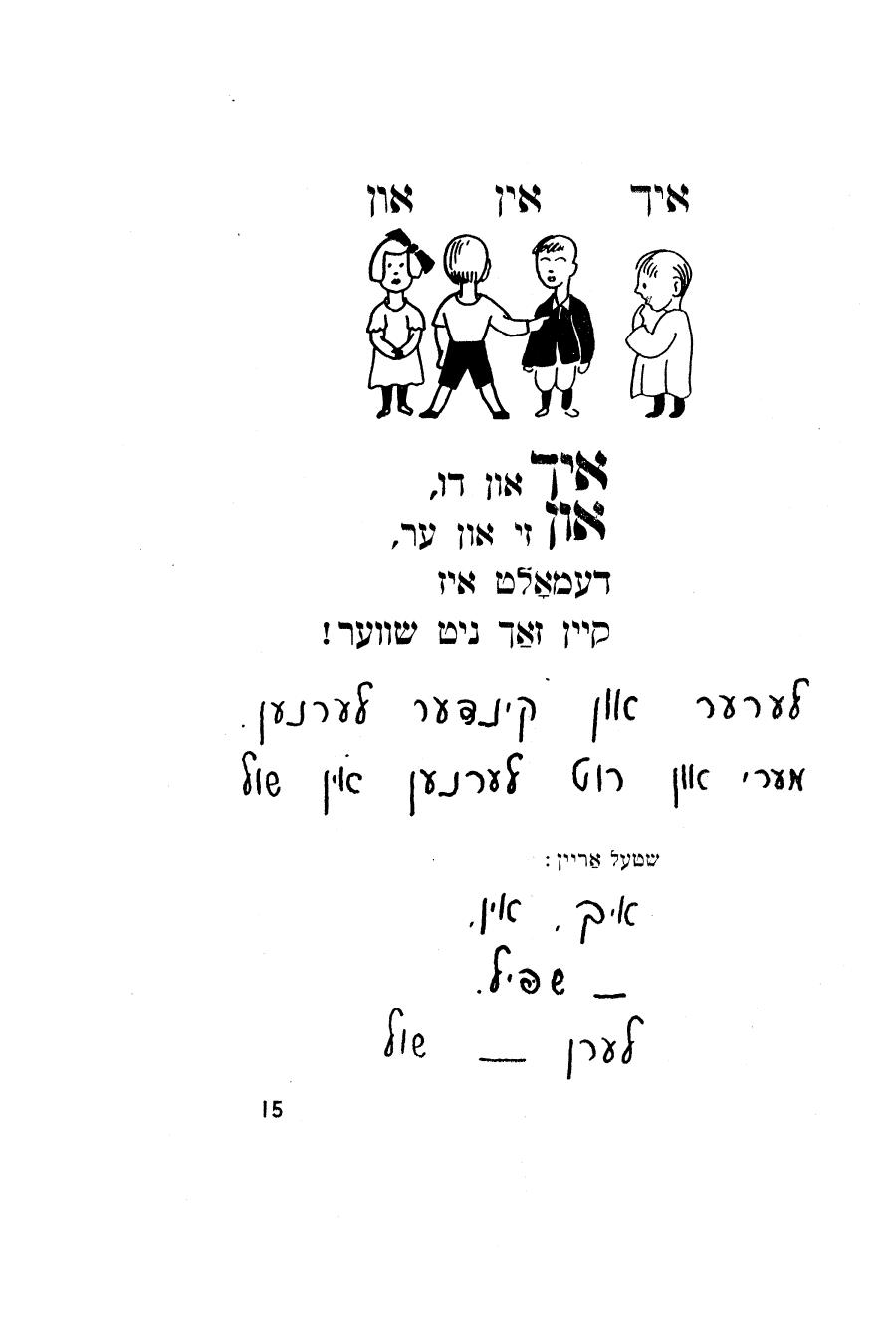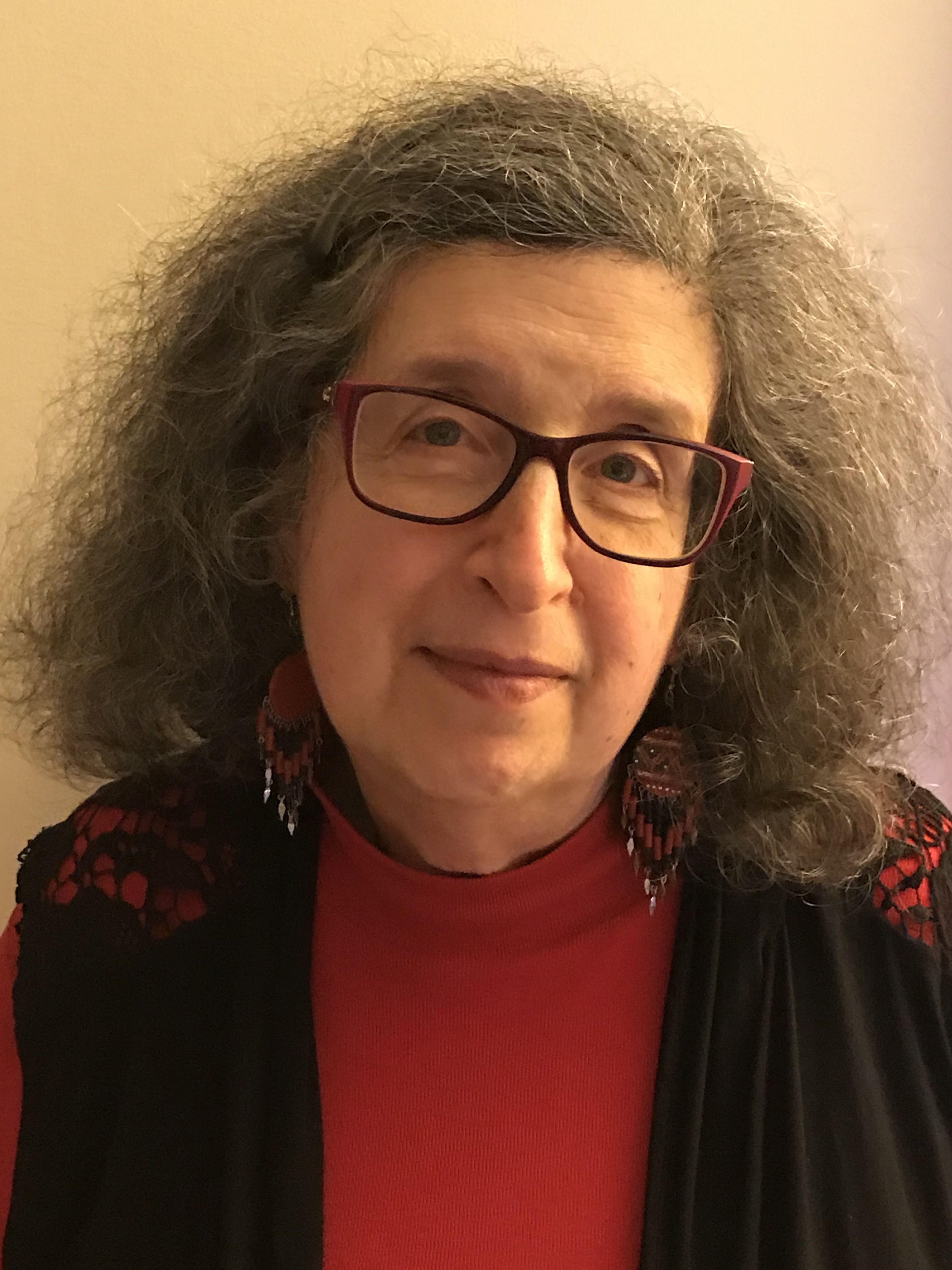Nov 15, 2022

inside page from Dvoyre Tarant, Mayn alefbeys (New York: Kooaperativer folks-farlag fun internatsionaln arbeter order, 1937)
There’s an untapped audience out there of potential Yiddish students at the peak of their learning ability, standing by for an infusion of simple Yiddish pedagogy that puts them ahead of the game when they’re ready to make a conscious choice to study Yiddish. I’m talking about preschool and primary learners in Jewish day care centers, preschools, kindergartens, and summer and afterschool programs.
In geveb has previously published on children’s pedagogy, including Judy Kunofsky’s 2017 article “Tam – Tastes of Yiddish Culture for Kids & Teens,” which addresses the practicalities of reaching younger learners. Kunofsky and her team have done the hard work of pitching Yiddish to teachers of this age group and have run into high walls of resistance. Before the pandemic, I attempted to promote Tam in my own community and met with many of the same objections: we don’t have time to add Yiddish to the curriculum; we don’t have personnel; learning two languages will confuse the children. People worry that teaching children two languages at once will confuse them, but children absorb contradictions and they can hold opposing concepts in mind. As a baby boomer, I learned Sephardic Hebrew but heard the Ashkenazi pronunciation in synagogues everywhere. I noticed the difference, but I was never disturbed or confused by it.
Tam’s approach is a great way to introduce Yiddish culture to children in preschool, afterschool, and religious school programs. Especially since the pandemic, curricula have become more fluid in these settings and teachers are scarce, making educators with less conventional knowledge or approaches more welcome than they used to be. The more conservative practices of the past are loosening, which means Yiddish educators may find that there’s more room for them now. This is especially true if they’re using the one teaching method that will always work: music. Preschools use music constantly and the goal is less to teach a particular subject and more to use the medium of music to engender learning readiness. There is no pressure to teach Hebrew as a foreign language in Jewish preschool or kindergarten, so teachers don’t have to have Hebrew fluency. They are mainly concerned with instilling general learning readiness as well as positive associations with the subject matter. Likewise, the Tam program sets a low bar for specific content knowledge. As Kunofsky emphasizes in her piece for In geveb:
Emotional connection is more important than content … we can try to spark an emotional connection with Yiddish culture … Emotional connections are most easily created with music. Many young adults approach one of our presenters, Gerry Tenney, at community events to say that they have never forgotten his presentation to their childhood class when he sang “that song about potatoes.” The song “Bulbes,” that is.
Teaching students with Yiddish song allows them to create positive associations with Yiddish, but it also has ancillary benefits because of shared goals with established Hebrew curricula. The Hebrew alphabet is usually presented in the kindergarten and primary school years, and as it is a shared alphabet with Yiddish, the letters can be introduced through Yiddish cultural content. As a Yiddish Book Center translation fellow, I translated Teatr-shpiln, a collection of plays for children by Leah Hofman. One play in the collection, Der alef-beys, features a song with a verse for each letter. Inexplicably, Leah Hoffman did not compose verses for the letters daled and khof, so in the process of translation, I added my own original English verses for these two letters.
Hoffman’s alef-beys song contains some reference to Yiddish differences in the letters, but nothing that is going to trip up the attention of a singing child. Since the first step in Hebrew instruction is learning the alef-bet, this song can do double duty, teaching the letters for both languages.

portrait of Leah Hoffman, in Kleyne in der groyser velt (New York: Farlag lebn, 1920).
To perform the poem, each student takes the role of a letter. The important thing is for the children to draw the letters for the costumes themselves. They must be involved in every aspect of the performance. A dressmaker by day, Hofman wrote detailed costume instructions, but the modern teacher can use standard construction paper methods to create a picture of the letter that will fit on a small torso. Note the playwright’s instructions for putting the print letter on the front and the cursive on the back. This allows the child to do a rotating dance for the letters vov, lamed, and nun, where the text of the song makes reference to their cursive form.
I set my translation to Mikhl Gelbert’s music for Peretz’s “Shteyt in Feld a Beymele”. The swaying ¾ meter of this song fits perfectly with the words and it’s easy to accompany. It meets the goals of teaching children to work together, follow instructions, carry out a project, memorize words to a song, and delight their parental spectators.
A search of the Yiddish Book Center database turns up sixteen alef-beys titles, all waiting for translation and use in Jewish preschools. What a great project for Yiddish students and teachers to tackle! Let’s not wait until today’s children are adults before we introduce them to Yiddish.
Click here to read the original Yiddish.
Click here to read Beth Dwoskin’s English translation.
Click below to listen to Beth Dwoskin’s recording of the alef-beys song in English.


